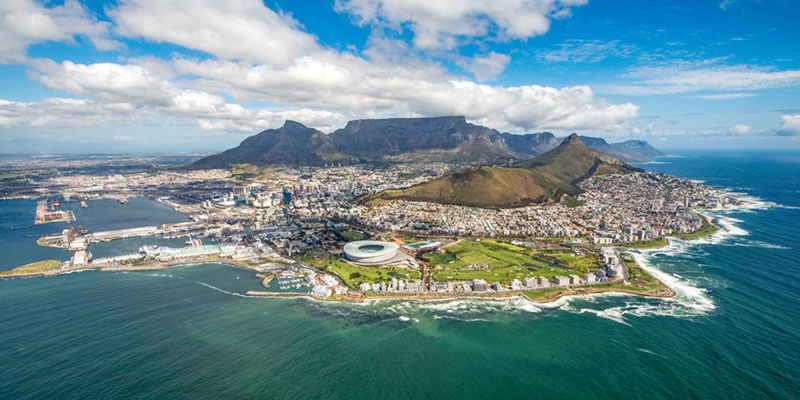It’s been predicted that in 2030, South Africa will experience a 17% water supply deficit. In recent years, Cape Town, the country’s second largest city, has come dangerously close to running out of water.
The Development Bank of South Africa is among the voices calling for increased investment in water reuse technology
According to estimates from the United Nations, 1.8 billion people around the world will live with absolute water scarcity by 2050, meaning they will have access to less than 500m3 per capita in water supplies. Today, Sub-Saharan Africa has more water-stressed countries than any region in the world.
The 2018 National Water and Sanitation Master Plan predicted that in 2030, South Africa would experience a 17% water supply deficit. In response, many experts, including the Development Bank of South Africa (DBSA), have proclaimed it critical to invest in updated water reuse technology to improve water availability.
Rather than adopting programs that would increase the supply of water, South Africa’s Voluntary National Review recommended a 15% reduction in water demand. Yet, many other voices continue to stress the need for new infrastructure and updated technology to increase available water.
In South Africa, there are social, cultural, and religious objections to direct potable reuse, that is, reusing highly treated wastewater as drinking water. In coastal areas, when it comes to drinking water, desalination seems to be preferred even though potable reuse is more cost-efficient.
Yet, indirect potable reuse — where wastewater is first run through an environmental buffer prior to being sent to a drinking water treatment plant — has been a de facto reality. For example, the town of Atlantis has been practicing indirect potable reuse for nearly 40 years, blending its wastewater with water from a groundwater aquifer before treating it at a drinking water treatment plant.
Strategies to Avert Water Scarcity
Dr. Kevin Winter of the University of Cape Townʼs Future Water Institute believes that the path forward includes:
- Significant investment in new water supply infrastructure
- A coordinated effort to fight the nation’s current 37% water loss
- Investing in innovation to conserve and reuse water without harming receiving bodies
While the water treatment process in South Africa exists, the DBSA stressed that “there needs to be a better water reuse system that makes use of advanced technologies.” The DBSA has identified water and wastewater reuse opportunities and is urging a move to an intentional, planned reuse. Hoping to turn water reuse infrastructure into a financial asset throughout the country, the bank has been developing a National Water Reuse Programme to support municipalities.
Water reuse is already taking place in some parts of South Africa. In Durban, for instance, every day a public-private partnership is treating a quantity of wastewater equivalent to 13 Olympic-sized swimming pools for reuse in a paper mill and a refinery.
Fluence manufactures a number of wastewater treatment products designed with advanced technologies built-in and with scaling in mind. For instance, membrane aerated biofilm reactor (MABR) technology forms the basis of modular Aspiral™ wastewater treatment plants, which are packaged in standard shipping containers. The units can be used alone or in tandem to treat various capacities. They’re easily transported to the point of use, avoiding the need for extensive pipelining. And, even as they save energy, MABR plants produce water that is ready for nonpotable reuse, meeting California’s Title 22 and China’s Class 1A standards.
The same MABR technology is available in SUBRE towers, which can be used to update existing plants — like the many failing ones in South Africa. By submerging the MABR technology in a plant’s existing basin, SUBRE technology allows for scaling up capacity without physically expanding the plant. It also cuts energy requirements and improves water quality.
Making Infrastructure Accessible
One of the challenges facing the country is how to update water infrastructure. Dr. Hlamulo Makelane, a research fellow at Nelson Mandela University, explained:
To address the challenges faced by the sector, public-private partnerships is [sic] required through which different sectors and actors can leverage their respective capabilities and resources in responding to rapidly evolving and complex scenarios of water issues.
Fluence is prepared with public private partnership (PPP) financing structures, including popular BOO and BOOT arrangements. With our Water Management Services, a municipality, resort, industrial operation, or other entity can secure the up-to-date water infrastructure it needs with virtually no risk. Fluence builds, operates, and maintains the infrastructure with no upfront investment; the client need only pay for water.
Fluence is a global water treatment company active in Africa with projects in South Africa, the Ivory Coast, Egypt, and Madagascar. Our solutions are ready to ship anywhere on the continent with unprecedented turnaround times and support. Contact our experts to discuss how your service area can avert water shortfalls and identify new reuse opportunities.

